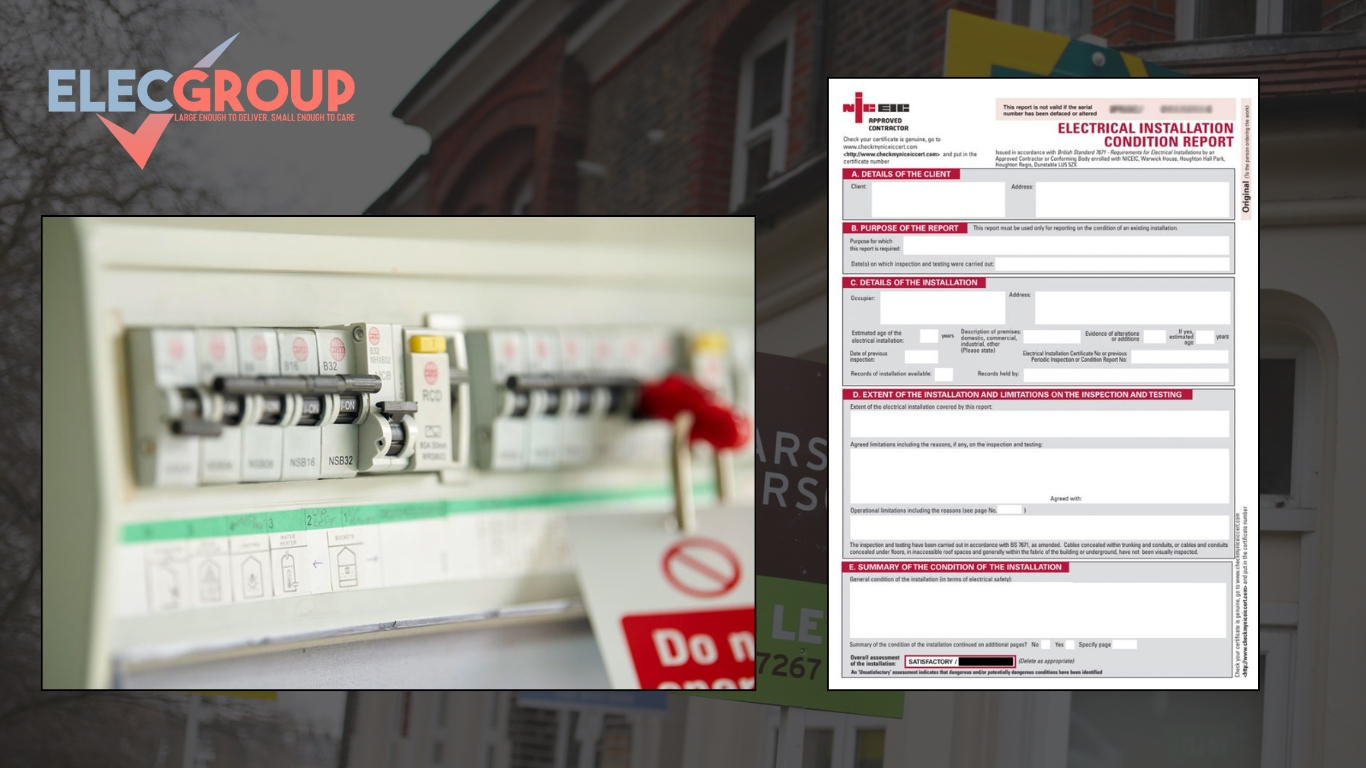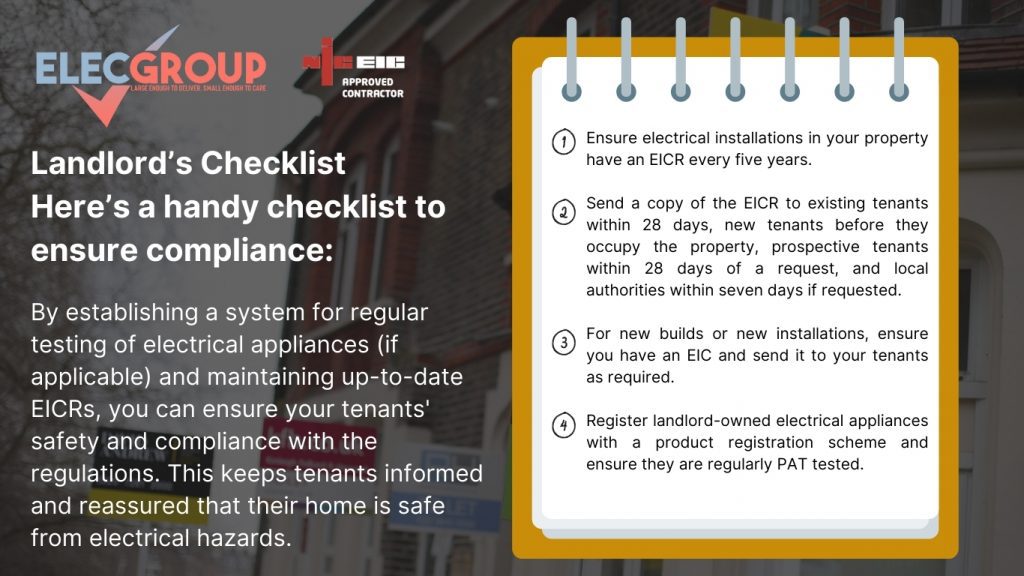What Landlords Need to Know About the New Electrical Safety Rules.
The Electrical Safety Standards in the Private Rented Sector (England) Regulations 2020 became law on June 1, 2020. Agents and landlords were given until April 1, 2021, to comply. With the deadline approaching, here is a comprehensive guide for Lettings Agents, Property Managers, and Landlords.
Is the Landlord Electrical Safety Certificate a Legal Requirement?
Absolutely, yes. Compliance is mandatory. Failing to adhere to the regulations can result in fines up to £30,000 from local authorities for breaching landlord duties.
Additionally, insurers require a valid (i.e., current and satisfactory) electrical inspection report for fire claims. If a fire is caused by an electrical fault and you can’t produce the report, your claim might be voided.


What Are the New Regulations?
These regulations are part of the government’s broader initiative to enhance safety in all residential properties, including the private rented sector and social housing. This step is crucial for ensuring that rented properties offer high-quality, safe, and secure accommodation.
The Electrical Safety Standards in the Private Rented Sector (England) Regulations 2020 require landlords to:
- Meet national electrical safety standards as outlined in the 18th edition of the ‘Wiring Regulations’ (British Standard 7671).
- Have the electrical installations in their properties inspected every five years by a qualified and competent person, retaining a copy of the report and scheduling the next test date.
- Provide a copy of the report to existing tenants within 28 days of the test date. For new tenants, supply the report before they occupy the property, and for prospective tenants, provide it within 28 days of a request.
- Send a copy of the report to local authorities within seven days if requested.
- Address any remedial work recommended in the report within 28 days or as specified by the inspector. Written confirmation of the completed work must be sent to the tenant and local authorities within 28 days.
What is Covered in ‘Electrical Installations’?
Electrical installations include fixed electrical parts of the property such as wiring, plug sockets, light fittings, fixtures (including permanently connected equipment like showers and extractors), and the consumer unit (or fuse box).
What is a Landlord’s Electrical Safety Certificate?
The final report, typically referred to as an Electrical Installation Condition Report (EICR), details the test results and any necessary investigative or remedial work. The inspector aims to identify potential risks such as:
- Overloaded circuits
- Fire hazards
- Defective electrical work
- Insufficient earthing/bonding to minimize electrical shocks
For landlord-owned electrical appliances (e.g., cookers, televisions, fridges), regular PAT testing is recommended, and registering these appliances with a product registration scheme ensures ongoing safety checks. Tenants are responsible for the safety of their own appliances.


How Do I Get a Landlord’s Electrical Safety Certificate?
Insurers accept Electrical Inspection Reports from the following approved bodies. Ensure your chosen inspector is a member of at least one: NICEIC, NAPIT, BSI, ECA, Stroma, ELECSA
Which Tenancy Agreements Do They Cover?
The regulations apply to assured shorthold tenancies, licenses to occupy, and private tenancies where the tenant occupies the property as their only or main residence and pays rent. Properties on statutory periodic tenancies with fixed terms expiring between July 2020 and April 2021 will need an inspection and test at that point.
What About New Build Properties?
For new builds or new electrical installations (re-wires), property owners should have an Electrical Installation Certificate (EIC). A copy should be provided to tenants and, if requested, to local authorities. The property must be re-tested every five years, with a copy of the report sent to tenants and local authorities.


